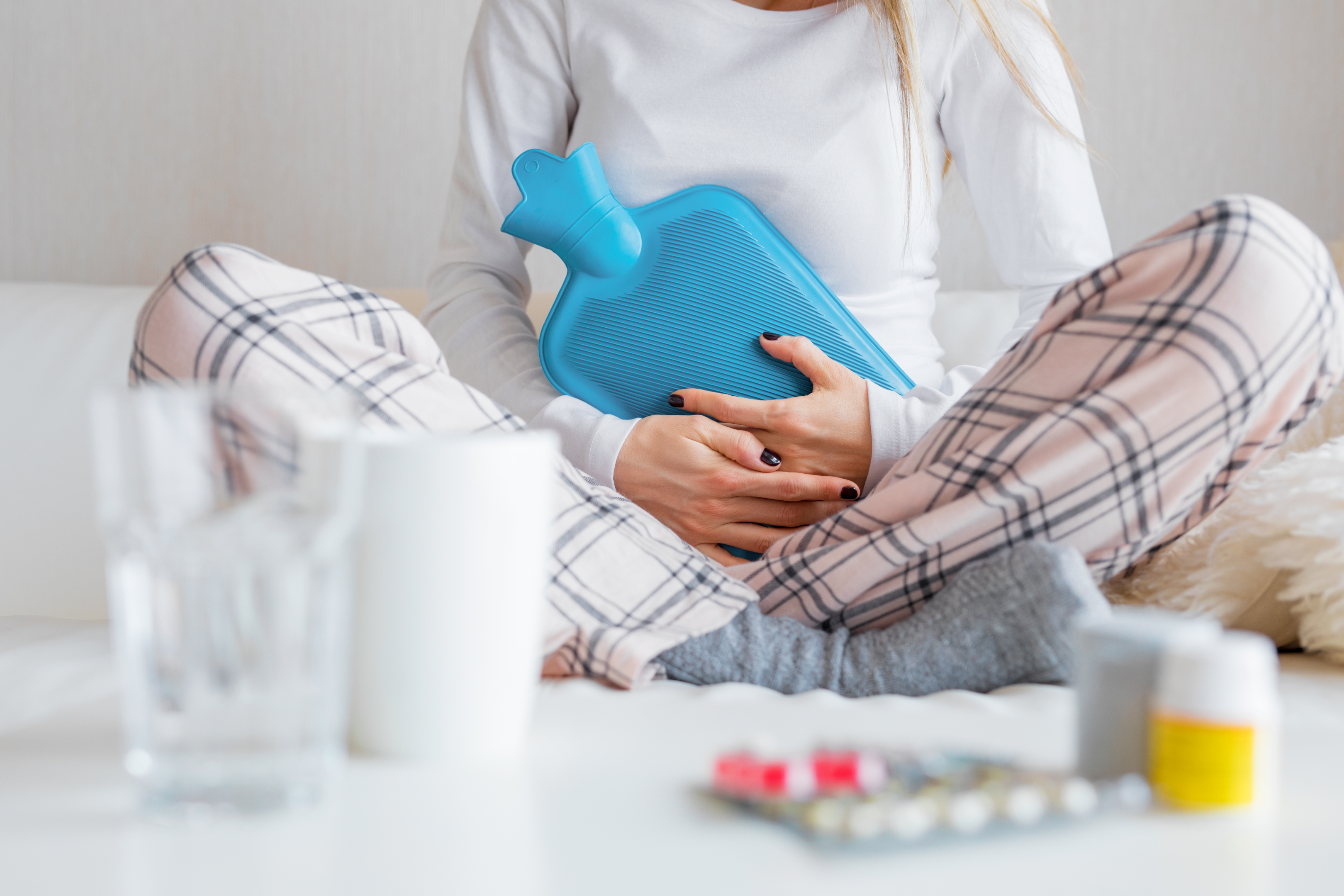What is the best medicine for menstrual cramps?



Menstrual cramps can occur during and before the onset of periods in women, and this condition is also known as primary dysmenorrhea. Your legs, lower tummy, or back may all experience cramping. The discomfort caused by these cramps might be moderate to quite painful. Additionally, you could experience nausea, diarrhoea, or constipation.
Period pain can have a variety of causes, and if you get painful periods regularly, you may worry. You might not have experienced painful periods until you were in your 20s. A doctor can explain to you why you experience excruciating cramps every month. The following are the reasons which cause menstrual cramps.
Most women experience premenstrual syndrome during their menstrual periods.
PMS begins a few days before the onset of your menstrual cycle and lasts for two to three days of your period. Doctors believe that the drop in oestrogen and progesterone levels that occurs just before the start of each cycle is the cause of PMS.
Along with menstrual cramps, fatigue and irritability also occur during this stage.
The endometrium is the uterus's outer lining which develops inside the uterus. However, if you have Endometriosis, the endometrium grows outward and covers the area of reproductive organs such as ovaries and fallopian tubes.
When your uterus removes its lining during periods, it may get stuck in the endometrium when you have endometriosis. These conditions lead to severe cramps.
PID is an infection of the uterus. When bacteria from a sexually transmitted infection (STI) enter the reproductive organs, the PID infection typically starts. Sometimes it can also occur after any surgical treatment in the uterus area. Many women with PID don't show any symptoms, but it might result in painful cramps for some people.
Usually, during menstruation, ovarian cysts form in the ovaries. Every month, at least one minor cyst forms in the women's ovaries, and it normally goes away.
But some women may develop more than one ovarian cysts, which can lead to other medical conditions. It may require medical treatment to manage the cysts. This condition can also cause menstrual pain.
When the endometrium fuses with the uterine muscle wall, that situation is known as adenomyosis. Although the endometrium can impact the entire uterine muscle, it usually fixes to one point in the uterus.
However adenomyosis can produce painful cramping, but it is a treatable condition. Adenomyosis is more common in those women who have given birth or who have had uterus surgery.
Menstrual cramps sometimes cause severe pain, which is hard for women to tolerate. However, there are multiple ways to lessen the cramps.
Although these methods can provide relief for mild to moderate period pain. it's crucial to remember that these methods won't always work, particularly for chronic conditions.
 Varies types of painkiller medication are used to relieve menstrual cramps. Before taking these medications, ensure you are not allergic to the drugs.
Varies types of painkiller medication are used to relieve menstrual cramps. Before taking these medications, ensure you are not allergic to the drugs.
The following are some of the medications.
Ibuprofen is an anti-inflammatory drug that is widely used in period pain. It is an over counter drug. Pain in your body occurs due to the production of chemicals called prostaglandins. Prostaglandins are released in the area of inflammation.
Ibuprofen works to stop the production of prostaglandins and thus relieves pain. You can use 200mg ibuprofen three times a day for 3 days for menstrual cramps.
This dose is for easing menstrual cramps. However, the dose can be adjusted according to the severity of the pain. These drugs may cause side effects such as nausea, vomiting and loss of appetite.
Buy Ibuprofen from the Welzo pharmacy here.
Acetaminophen is another painkiller used for the treatment to relieve pain. Acetaminophen is used in less severe pain. It has the advantage of not causing any side effects. The market name of Acetaminophen is Tylenol. You can use 500mg of Acetaminophen two times a day for 3 to 4 days. This medicine is an over-the-counter painkiller.
Naproxen Sodium is considered the most effective for cramps. It is also related to the anti-inflammatory drugs group.
It is used in severe pain when doesn't relieve with Ibuprofen and Acetaminophen. For period pain, 1 tablet of 550 mg of Naproxen Sodium after every 8 hours is enough. However, your doctor may adjust the dosage according to the severity of the pain.
Tiny needles are inserted under the skin at specific bodily locations to perform acupuncture. According to research, acupuncture can reduce period pain.
Menstrual cramps might be relieved to some extent by herbal products like pycnogenol, fennel, herbal teas or a combination product
Besides medication, there are also some home remedies to relieve period pain.
Which includes:
Similar to acupuncture, acupressure involves pressing on specific body spots. Instead of using needles, this is accomplished with acupressure by applying light pressure to the skin. Acupressure appears to be more helpful than a placebo in relieving menstrual cramps, despite the lack of studies on the topic.
Menstrual cramps may be relieved by taking a hot bath, heating pad, or water bottle. You can also apply a heat patch to your lower belly. To relieve period cramps, using heat may be just as beneficial as painkillers like Ibuprofen and Acetaminophen.
Studies have shown that taking vitamin E supplements, omega-3 fatty acids, vitamin B-1 (thiamine), vitamin B-6, and magnesium may help relieve menstrual cramping.
Physical activity can also ease the pain. Contraction and relaxation of lower abdomen muscles during exercise may be helpful in reducing pain intensity.
Additionally, exercise might reduce your stress level, lowering your pain threshold.
To view our full range of pain relief medication, see our Pain Relief Treatment page here.
Plus get the inside scoop on our latest content and updates in our monthly newsletter.